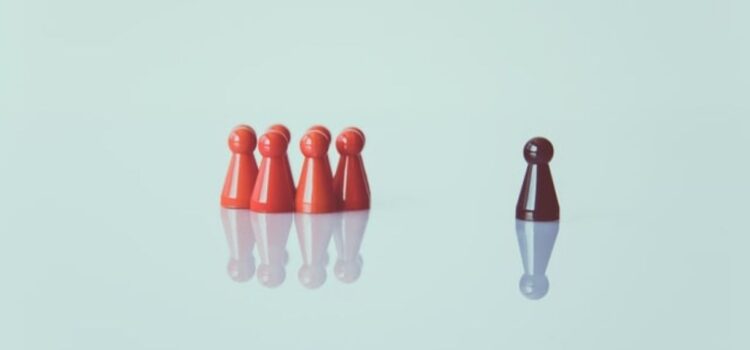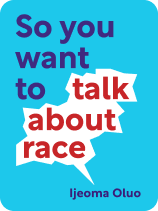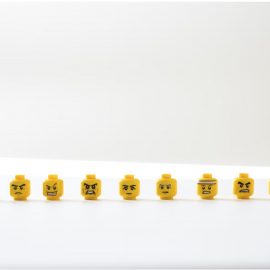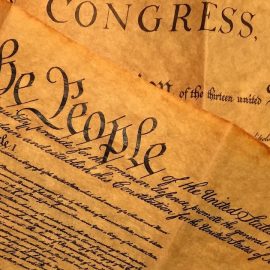

This article is an excerpt from the Shortform book guide to "So You Want to Talk About Race" by Ijeoma Oluo. Shortform has the world's best summaries and analyses of books you should be reading.
Like this article? Sign up for a free trial here .
What is institutional racism? How does institutional racism relate to white supremacy?
Institutional or systemic racism is a form of racism that operates on the level of underlying societal structures and systems (e.g. criminal justice system, health care, education, etc.). According to Ijeoma Oluo, the author of So You Want to Talk About Race, institutional racism is a product of the White Supremacist system.
Keep reading to understand what institutional racism is and why it can be considered a product of the White Supremacist system.
What Is Institutional Racism?
If something is systemic institutional, it’s built into the underlying structure of a system. It’s an integral part of how the system operates. We can visualize each instance of institutional racism as a thread in a vast fabric—so vast that we’re completely caught up in it and can’t see its boundaries or overall shape. Similarly, we’re surrounded by racist messaging, but much of this operates unconsciously.
Though it may seem controversial, we can characterize institutional racism as a consequence of the societal system that is built on the white supremacist ideology. Why?
In a White Supremacist system, whiteness is both the aspiration and the default. The system was built for the benefit of white people and at the expense of people of color. This dynamic is still playing out in both obvious and subtle ways. Here’s how it works.
Whiteness is the default. In our society, whiteness serves as the reference point for “normal.” The White Supremacist system normalizes its perspective as the default. This makes anyone who doesn’t match the default invisible.
As an example, let’s consider hair. If you’re a black woman, chances are you know a lot about white women’s hair. It’s everywhere—in magazines, in films, in commercials. You know how to care for it, what products to use, what styles to put it in, and so on. But if you’re a white woman, how much do you know about black hair? Do you know what pomades, Denmans, and co-wash are? That knowledge gap exists because white hair is the default.
Many standard dress codes don’t allow for the different hair needs of people of color. The military, for example, prohibited small braids up until very recently, and natural black hair is still seen as unprofessional in many offices around the country.
Whiteness holds a superior position. Superior and inferior are always relative. If one person or group has a superior position, by definition there has to be another person or group that’s beneath them. And this is the seduction of White Supremacy: It whispers You deserve more because they’re here to deserve less.
Wherever there’s a finite amount of power or resources, the social function of people of color is to get a relatively smaller piece of the pie. Even if they don’t realize this consciously, people may feel that this is the natural order of things.
That’s why the election of Barack Obama increased, rather than decreased, expressions of White Supremacy. Obama’s election to the most powerful office in the country disrupted this unconscious assumption. If a black person, whose entire purpose is to be “less than,” can assume the presidency, this feels fundamentally wrong to someone who’s been raised on a diet of White Supremacist beliefs—often in ways in which they can’t put into words.
Obama felt like a threat, because he was. But he wasn’t a threat to the country; he was a threat to the very structure of White Supremacist beliefs. After Obama was elected, many people were left feeling alienated from a country that they thought they understood. This alienation became the foundation of political movements that are still in force today.
In such an individualist culture, we don’t like to think about ourselves as part of a system. We like to think that everyone has complete independence. But these individualist tendencies obscure our view of the big picture.
Individualist assumptions trick us into thinking that racist cops are just “bad apples” and that every black man who goes to prison deserves it. We need to battle these tendencies and focus on the patterns, even—especially—if this means taking a good hard look at ourselves.
When we acknowledge racism as institutional, we see that there are no different “types” or “levels” of racism. The seemingly innocuous comments and stereotypes come from the same place as the violence and abuse. Yes, avoiding a black person on the subway because you think they’re aggressive might hurt their feelings. But it also references the same general belief that leads to one in three black men in the US being incarcerated at some point in their lives, far higher school suspension and expulsion rates for children of color, and a heartbreakingly high number of police shootings by cops who feel threatened by men of color.
The “innocuous” or “private” beliefs and emotions are part of the system. Without these usually invisible parts, the most damaging, extreme parts of the system couldn’t survive.
The system isn’t “out there” where we can’t reach it. It’s made up of the small and large decisions we all make every day.
- Do you dismiss someone’s experience automatically?
- Do you reach out to touch someone’s hair without asking?
- Do you laugh when someone makes a racist joke?
- Do you talk about race or stay silent?
The good news is that seeing racism as institutional gives us many more ways to dismantle it. Because different parts of the system are propping each other up, if we pull out enough of the foundations the whole ugly thing will collapse.
Racism is systemic. It takes many forms, from the subtlest to the most blatant. The fact that there are extreme forms of racism doesn’t make the subtler forms any less serious or any less racist.
Here’s an analogy. You’re walking down the street. Every few minutes, a passer-by punches you in the arm. You can’t predict who or where the next punch will come from. After a while, you’re exhausted from trying to predict who will punch you next. Eventually, someone passes you, deep in conversation with a friend, gesturing excitedly and not paying attention to their surroundings. One of their wild gestures flies out and hits you in the arm. You scream, tired of defending yourself against all this unpredictable violence.
It doesn’t matter whether or not the last punch was unintentional. Even if there were no bad intentions, the punch was part of a long history of violence you’ve been defending yourself against ever since you can remember. And this person has learned that it’s okay to gesture recklessly on the street without thinking about the consequences.
This is why demanding that a person of color “prove” the bad intentions of the last person who punched them misses the point. We need to be looking at the overall pattern of punches in the arm, the lack of self-reflection in the people who perpetuate this pattern unknowingly, and the scars on the arms of people who are constantly getting hit. Instead of arguing about the last person’s intentions, we need to be listening to the people who carry these scars and putting measures in place to protect them from getting hit again.
Yes, following these three criteria means that the threshold is low. And it should be. We need to be as inclusive as possible if we’re going to step back and understand the system as a whole.

———End of Preview———
Like what you just read? Read the rest of the world's best book summary and analysis of Ijeoma Oluo's "So You Want to Talk About Race" at Shortform .
Here's what you'll find in our full So You Want to Talk About Race summary :
- How to have an intelligent, empathetic conversation about race
- Why people are afraid to talk about race
- Where racism came from and what fuels it






